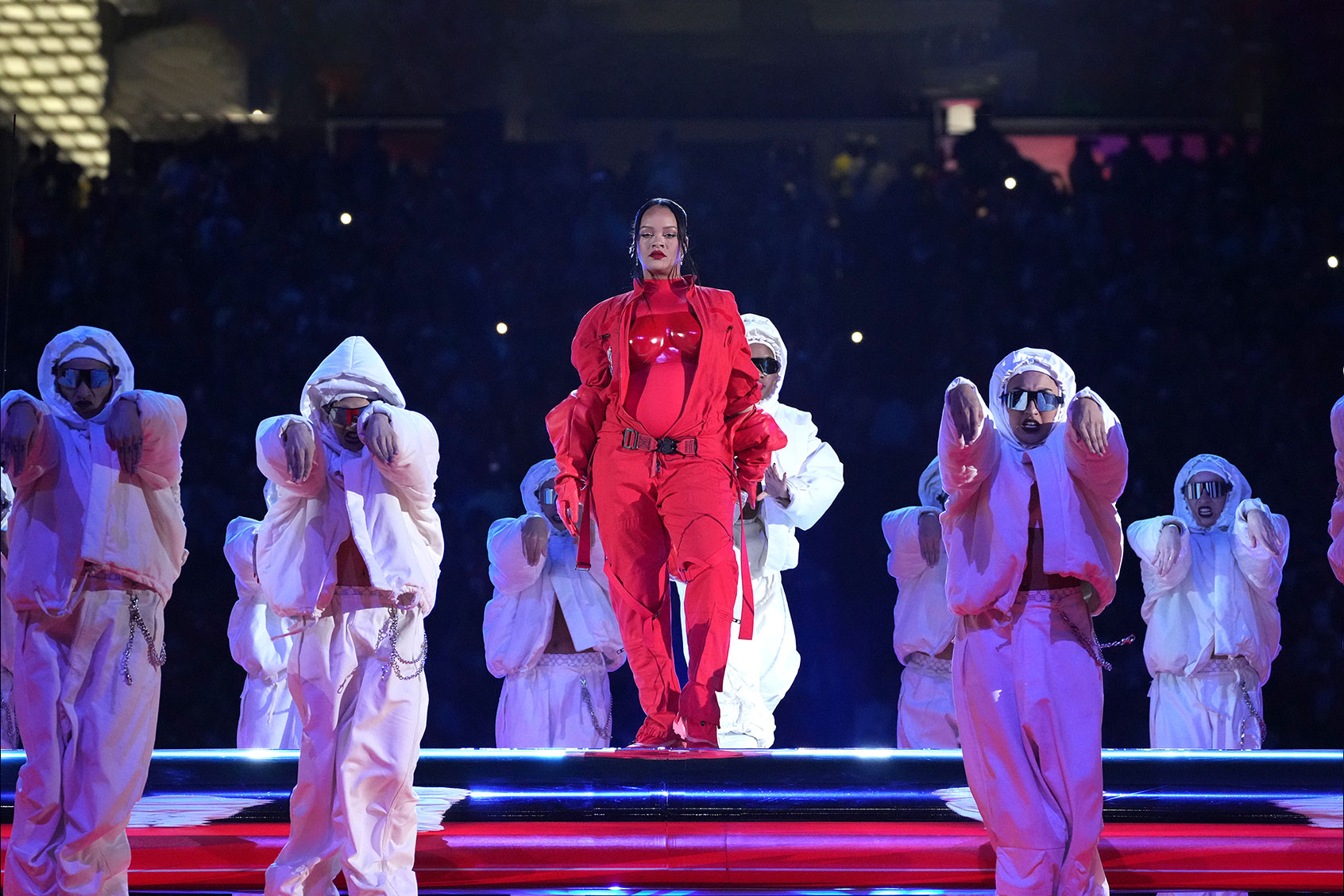On Sunday’s Super Bowl broadcast, viewers paid sharp attention to a performer some had never known about before the game started. The performer is Justina Miles, who interpreted Rihanna’s halftime performance. Miles, who is Hard of Hearing and rose to fame on TikTok, also performed “Lift Every Voice and Sing” in a pre-show rendition sung by Broadway and “Abbott Elementary” star Sheryl Lee Ralph.
Miles’ performances were part of some firsts for the broadcast: the first deaf woman to interpret the halftime show and, according to CNBC, “the first deaf person to perform the ASL rendition of ‘Lift Every Voice and Sing,’ known as the Black national anthem, at the Super Bowl.” Oscar-winning actor Troy Kotsur, who appeared in “CODA,” and Colin Denny also performed. Denny, a Navajo scholar, performed a mixture of ASL and North American Indian Sign Language.
From sports to news, overwhelmingly, interpretation for the deaf/Deaf and Hard of Hearing has been done by performers who are not themselves deaf, a source of frustration within the community. Hearing interpreters have usually not been signing since birth, have a different relationship with sign languages, and their hiring provides fewer opportunities for deaf artists to work.
The inclusion of three deaf artists at the Super Bowl is a kick in the right direction, but the network’s treatment of their performances? It was less than superb.
Miles, Kotsur and Denny all received overwhelming praise for their performances. Yahoo! News wrote, “Rihanna may have headlined the Apple Music Super Bowl LVII Halftime Show. But according to the internet, the singer’s American Sign Language performer, 20-year-old Justina Miles, was the real star.” Miles was energetic and animated throughout Rihanna’s long medley, with the full-body movement and facial expressions needed for signing. The writer/director of “CODA,” Sian Heder, was among the many who praised Kotsur’s empathetic performance as well where he “absolutely killed it.”
@TroyKotsur absolutely killed it with his #ASL performance of the national anthem alongside @ChrisStapleton at the #SuperBowl. Everyone needs to see this! pic.twitter.com/7ZC4hH5wyp
— Sian Heder (@sianheder) February 13, 2023
People were also moved by Denny’s performance. As Jonathan Nez, who was the ninth President of the Navajo Nation, wrote on Twitter, “Great to hear the ‘Navajo Nation’ on international television once again.” But unfortunately most were unable to witness very much of Denny’s historic and moving performance as the television cameras cut away, focused on football players’ reactions to Babyface’s “America the Beautiful,” and not on the person working hard to interpret it.
This was a problem for all the deaf performances. It was really hard to find them. No performer, including Miles, was shown throughout the television broadcast. Viewers could have steady access to the sign language performers through a YouTube link, which featured the performers side by side with what they were interpreting. However, the link was mislabeled, the feed was glitchy.
And that feed specifically for the deaf/Deaf and Hard of Hearing? It did not have any captions.
An easy solution exists and has for years: picture-in-picture technology, a type of multi-window mode which allows the user to watch a smaller video in a corner of the screen while a larger video plays on the main screen. This second, smaller video could show the interpreters consistently throughout the broadcast. Making this technology standard for huge events like the Super Bowl, a time when not everyone in a household might have control over their own viewing device, would go a long way toward these events actually being accessible.
Want a daily wrap-up of all the news and commentary Salon has to offer? Subscribe to our morning newsletter, Crash Course.
We’re in an odd time of people who don’t need accommodations finding romance in them. Witness hearing people’s new obsession with captions. I’m glad you think they’re cool but as a deaf person, I need them to be able to communicate (and I need them to be straightforward, not fancy, and actually there). But people don’t love captions enough to make them open in movie theaters.
And as the well-deserved attention toward Miles and the other performers proves, non-disabled people sure love sign language. But they don’t love to provide it consistently, clearly or easily to the ones who need it most.
Read more
about signing

